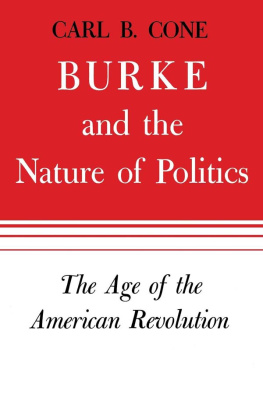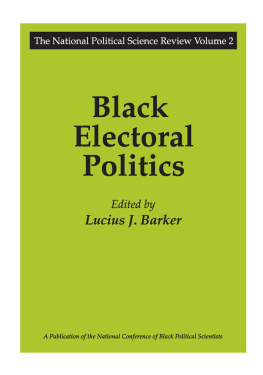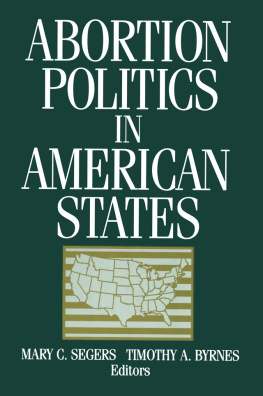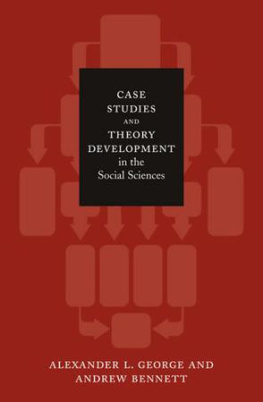The Catholic Church and the Politics of Abortion
The Catholic Church and the Politics of Abortion
A View from the States
Edited By
Timothy A. Byrnes
and Mary C. Segers
First published 1992 by Westview Press, Inc.
Published 2019 by Routledge
52 Vanderbilt Avenue, New York, NY 10017
2 Park Square, Milton Park, Abingdon, Oxon OX14 4RN
Routledge is an imprint of the Taylor & Francis Group, an informa business
Copyright 1992 Taylor & Francis
All rights reserved. No part of this book may be reprinted or reproduced or utilised in any form or by any electronic, mechanical, or other means, now known or hereafter invented, including photocopying and recording, or in any information storage or retrieval system, without permission in writing from the publishers.
Notice:
Product or corporate names may be trademarks or registered trademarks, and are used only for identification and explanation without intent to infringe.
Library of Congress Cataloging-in-Publication Data
The Catholic Church and the politics of abortion: a view from the
states / edited by Timothy A. Byrnes and Mary C. Segers.
p. cm.
Includes index.
ISBN 0-8133-8415-X
1. AbortionReligious aspectsCatholic Church. 2. Abortion
United StatesStates. I. Byrnes, Timothy A., 1958 .
II. Segers, Mary C.
HQ767.3.C36 1991
363.4'6'0973dc20 91-34430
CIP
ISBN 13: 978-0-367-29054-2 (hbk)
For our families: Dolores, Gavin, and Brigid Byrnes, Margaret W. Severs, and Jerry, Suzanne, and Jean-Paul Severs Travers
Contents
, Timothy A. Byrnes and Mary C. Segers
, Timothy A. Byrnes
, Mary C. Segers
, Rebecca M. Salokar
, MaryAnne Borrelli
, Thomas J. O'Hara
, Christine Day
, Spencer McCoy Clapp
, Timothy A. Byrnes
, James R. Kelly
, Mary C. Segers
Guide
We had a great deal of help in producing this book. Lyman Kellstedt of the American Political Science Association's Special Section on Religion and Politics allowed us to try out our ideas on a panel at the association's 1990 meeting in San Francisco. Paul Weber and John Francis Burke offered helpful suggestions at that session. Amy Eisenberg and Deborah Rich at Westview Press were helpful and supportive throughout. A. David Lynch of the City College of New York and Murray Karstadt of Rutgers University turned eleven chapters on five different word processing programs into a single manuscript. Needless to say, we could not have done it without them. Vicky Donner, supported by the City College Scholars Program, also assisted in readying the manuscript for publication. Dolores M. Byrnes prepared the index. Mary Segers acknowledges Dean Donald G. Stein and the Graduate School at Rutgers in Newark for the partial support provided by a 1990-91 graduate research award. Lastly, we both offer our gratitude to the contributors to this volume. All of the chapters of this book, with a single exception, were written explicitly for inclusion in this book; none have been published previously. We could not have asked for more enthusiastic responses to our requests to contribute nor greater responsiveness to the time constraints we set. The goodwill of the contributors allowed this book to be the collaborative effort we originally hoped it would be. That said, the views expressed by each individual author are those of that author alone.
Timothy A. Byrnes
Mary C. Segers
Timothy A. Byrnes and Mary C. Segers
This book is a study in religion and politics. It analyzes the efforts of a major American religious institutionthe Catholic Churchto shape public policy on one of the most controversial political issues of our timeabortion. Scholarly interest in the relationship between religion and politics has increased tremendously over the last decade. While much of the ground-breaking work in this area was broadly-based and quite general in scope, In this volume, we concentrate on Catholic political activity at a particular point in time and in a particular geographical context. Our focus is on the official Catholic response to the Supreme Court's recent retreat from Roe v. Wade . In its 1989 decision in Webster v. Reproductive Health Services, Inc., the court indicated that it was willing to entertain and accept more aggressive regulation of abortion by individual states. The essays in this book represent the first published attempt to gauge the effects of Webster on abortion politics in the states, and to examine the efforts of a powerful religious group to influence abortion policy at the state level.
We have chosen the Catholic Church for this study of the relationship between religion and public policy because of the church's high public visibility on this issue and because of its strength and power in American public life. The Roman Catholic Church constitutes the largest single religious denomination in the United States, numbering 55 million Catholics or 23 percent of the population. Moreover, contemporary American Catholics do not fit the working-class ethnic stereotype of the past. According to a 1987 CBS/ New York Times survey, Catholics tend to be both younger and better-off than nonCatholics. In terms of income and education, more than one-third of American Catholics report family incomes exceeding $ 5,000 per year, and 27 percent of Catholics have attended college, only two points lower than Protestants.
Politically, Catholics have achieved the highest positions of power in the United States. Since 1960 and the election of John F. Kennedy as the nation's first Catholic president, many other Catholics have run for president and vicepresident, among them Eugene McCarthy, Edward Kennedy, Sargent Shriver, Robert F. Kennedy, Thomas Eagleton, Geraldine Ferrar o, Bruce Babbitt, and Joseph Biden. The U.S. Congress is 25 percent Catholic; Speaker of the House Thomas Foley is Catholic, as is Senate Majority Leader George Mitchell. Two Supreme Court justices, Antonin Scalia and Anthony Kennedy, are Catholic, and Clarence Thomas, President Bush's choice to replace Thurgood Marshall, is a proud product of Catholic education.
This powerful religious denomination has been and continues to be one of the most active elements in the national pro-life movement. But more importantly for our purposes, few American institutions can match the Catholic Church in organizational strength at the state level. Twenty-eight states have Catholic conferences that lobby state lawmakers on a wide range of public policy issues. And since the Supreme Court handed down its decision in Webster , these conferences have been active and in some cases very effective.
In this introductory chapter, we will lay the groundwork for discussion of the Catholic Church's role in the contemporary politics of abortion. We will begin with a brief description of the Catholic Church's teachings on abortion, and move on to a sketch of the history of restrictive abortion legislation in the United States. We will then describe the content of Roe v. Wade , the court's 1973 decision effectively legalizing abortion, and outline the strategies adopted by forces seeking to have that decision negated. We will also examine the court's ruling in Webster v. Reproductive Health Services , and suggest some of the challenges and opportunities that ruling presented to the Catholic Church and the rest of the pro-life movement. This chapter will end with an explanation of the criteria we used in commissioning the state-level case studies that make up the bulk of this book.










